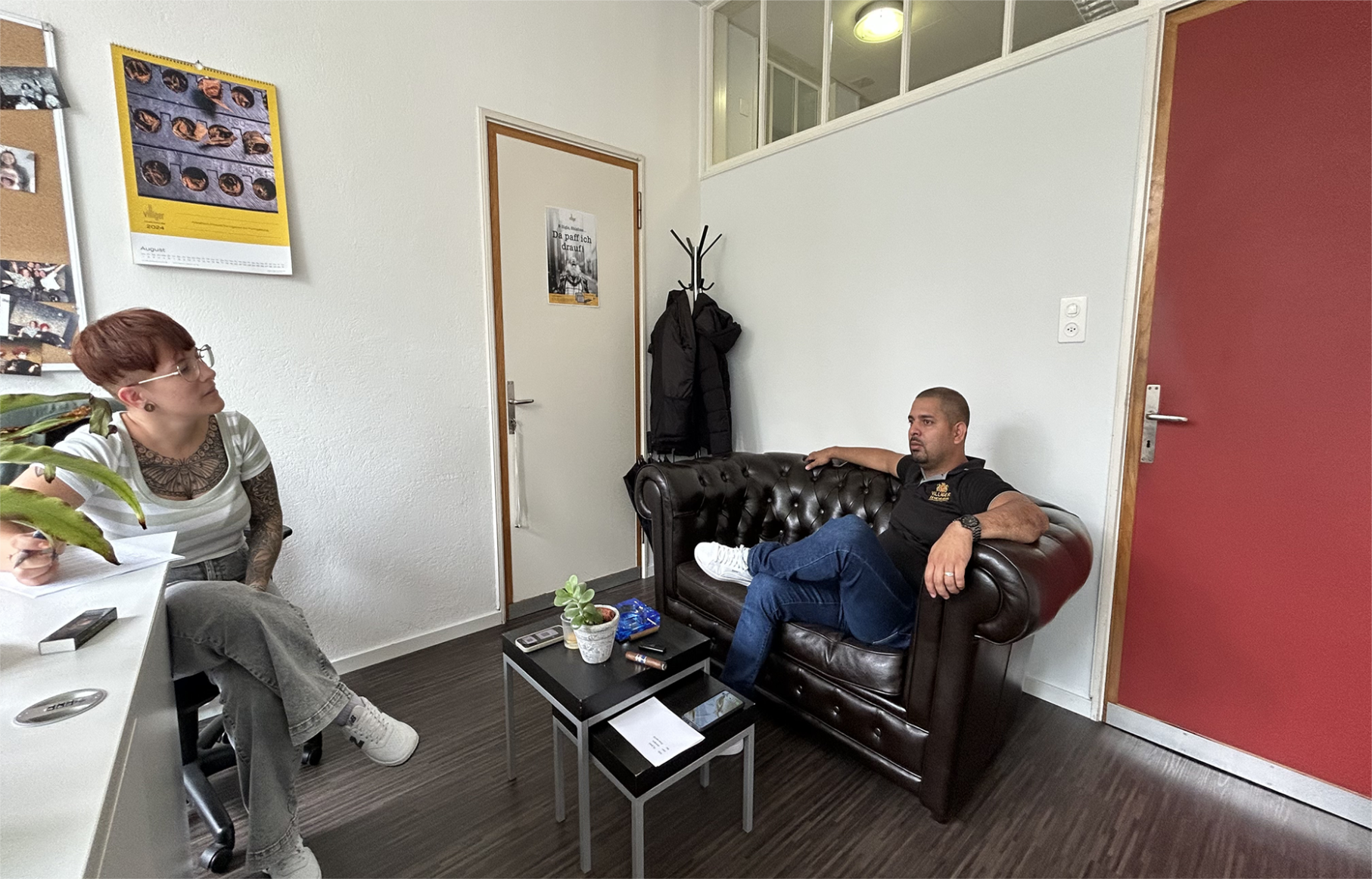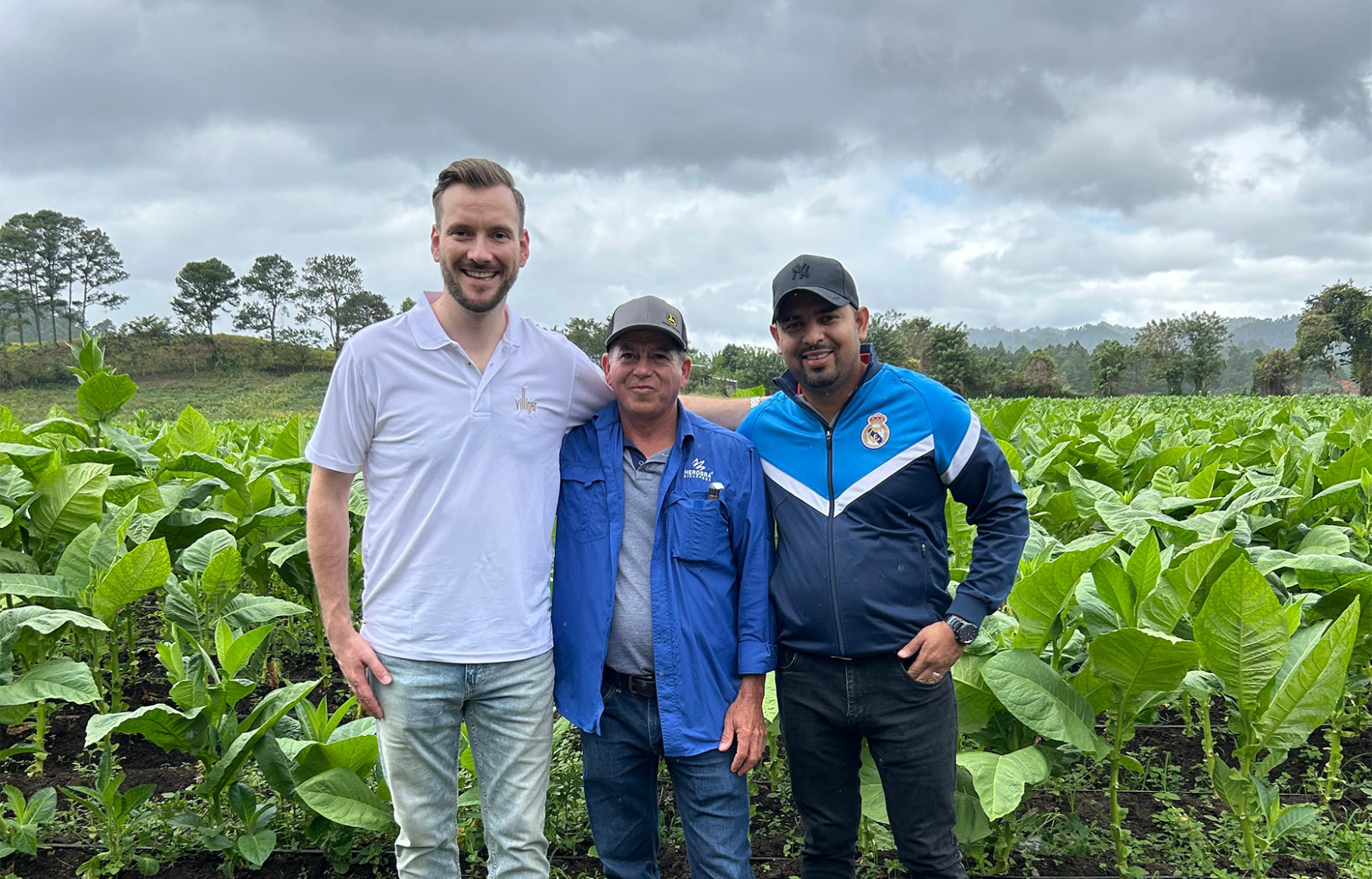Imagine the following: You have finished work and are looking forward to a special moment of pleasure. You take a cigar in your hand, light it with calm movements, and the first aroma unfolds. A warm, earthy, spicy smoke rises, perhaps with a fine, sweet note. Each puff reveals more of the cigar’s diversity: Aromas that open up layer by layer, sometimes intense, sometimes mild, giving the moment a unique depth. When you smoke a good cigar, you quickly realize: There is much more to it than just tobacco. It is the result of experience, sensitivity, and tradition.
Who creates this orchestrated masterpiece that captivates cigar connoisseurs worldwide? Behind this intense moment of pleasure is the Master Blender, a true artist of tobacco. Today, we present one such “tobacco virtuoso”. We had the pleasure of welcoming Master Blender Yasserth Reyes from Nicaragua to Pfeffikon to interview him, during which he shared how he learned his demanding profession and why he takes such pride in it.

The most critical question is: What exactly is a Master Blender? What is it you do in your job?
Yasserth Reyes: That’s a solid question. For me, the job of Master Blender comprises two significant parts. First comes the responsibility as a worker and as a company to ensure that what you create is successful. Second is the passion invested in meeting customer expectations. A Master Blender puts themselves in the consumer’s shoes to strive for perfection in every blend. They know that there is the right cigar for every occasion and every aficionado. The Master Blender is the person who knows, has the patience, and above all, the passion to combine tobacco in such a way that it touches the souls of the people who smoke the final product. They want to design the blend so they can share it with as many people as possible. It fills me with pride to know that what you do gives people pleasure, and when you eventually meet them, they tell you, “What a great cigar.”
How did you first come into contact with cigars?
I was young and had just finished secondary school in my country. My relatives worked in cigar production. I was fascinated by the question of what tobacco is actually all about. When I saw my relatives at work and asked them about it, no one could explain or show it to me. Thus, I wanted to find out for myself. That was my initial impression and why I eventually ended up working with cigars.
When I was in a cigar factory, I needed to taste my way through the different tobaccos and blends to better understand what it was all about. My contact with the world of cigars was curiosity. I still have it today, because you always learn something new.
How did your career start?
I was looking for work while I was in university. In Estelí, considered the heart of Nicaraguan cigar production, I visited a factory three times to get an apprenticeship, but was unsuccessful. They weren’t looking for many people at that time.
However, I didn’t give up because I was determined to find employment, and I also wanted to find out what tobacco was. I spoke to a family I knew, who then wrote me a recommendation so that I could learn.
After about a month, I was able to go straight into production. I remember it like it happened today. My first weekly wage was a dollar or less. However, that didn’t stop me.
I continued on my way step by step. I had the chance to work as a bonchero (a person who wraps the filler and binder into a bunch), in tobacco preparation, and even in the pilones (fermentation stacks). Later, after completing my training, I was able to work in quality management and product development. At Joya de Nicaragua, the oldest factory in Nicaragua, I went through all the stations. Quality control, in particular, gave me an overview of many other areas.
I also managed employees and, together with colleagues, eventually started creating my own blends. This experience brought me to VILLIGER de Nicaragua.
Was that a long journey for you?
Yes, it took me 20 years to get here. I started when I was 17.
In Nicaragua, school ends at the age of 16. Afterwards, I studied business and later specialized in finance. During my studies, I worked and we made cigars. I worked in a different industry for a while, but I’ve been back in the tobacco industry full-time since 2016.
Did you have a mentor, or was there a particular person who influenced you along the way?
In the past, I was under the impression that you could define that clearly. However, that’s not the case. In the world of tobacco, you learn a little from everyone.
It’s not like a single person shapes you. In the end, it must be your curiosity that drives you. No one can explain tobacco in one book. It doesn’t work if you don’t feel it. Everyone only teaches you what they know. Thus, it’s up to you to learn from everyone.
Everyone deserves respect, regardless of whether they make cigars in the Dominican Republic, Cuba, or Nicaragua. Everyone works with passion, even if each region has its own style.
You learn so much from handling tobacco, from harvesting to fermentation to maturing, even though the plant supposedly dies when you cut it. You will always learn if you want to.
In a way, you’re taking a piece of everyone with you on your journey, right?
Precisely. Today I can say with certainty: Even if you try to control your nervousness when making decisions, it still feels like the first day. Why is that? Because you only ever want the best. You want people to enjoy the product, to reach for the brand and to fall in love again and again. That’s positive pressure. My responsibility is always to give my best.
Of course. Are there any limits? Considering tobacco is a plant, it cannot be controlled like other things.
Correct, you can’t control everything. Around 300 people are involved in a single process, that’s 600 hands. You have to hope that everyone gives their best.
No one can monitor each step. What you have to do, however, is to monitor and check the crucial points constantly. It is the only way to retain consistency. You expect the same quality as the bottle of wine you bought last month when opening a box.
Aficionados expect the same experience from their first draw. That’s why I always try my blends, because if you don’t taste them, you can’t be a master blender. It is the only way to ensure the desired consistency and consistent quality. Our team in Nicaragua is the direct extension of VILLIGER in Germany and Switzerland. There’s no difference.
Where does your work begin? Do you start with tobacco that has already been fermented or before?
Our work does not begin with the purchase of the leaf, but with the people. You have to convince the farmer, the fermenter, and the quality inspector. Everyone must understand that their contribution forms part of a larger whole.
Suppose a tobacco grower focuses too much on quantity instead of quality. In that case, you will notice it when you taste the cigar. Flavors and burn suffer as a result. You realize this when smoking. That’s why you have to convince them to do it right from the start.

The same applies to fermentation: Some people want to save on costs and time, but quality suffers as a result. That’s why you have to work hard to get everyone on the same page. Fortunately, we managed this well in Nicaragua.
We are a young factory producing over two million cigars a year. For us, quality is non-negotiable. That’s why we only buy tobacco from farmers we know and who share our standards. It’s about getting everyone on board.
Is it a huge responsibility?
Yes. Our factory in Nicaragua feeds 60 to 70 families. If we do our job well, everyone prospers. That’s our responsibility.
We do our best because we know it only works when we work together. Connoisseurs in Germany, Switzerland, and from all over the globe trust us. In turn, we trust the people in production. It is not a mechanical process. It takes persuasion, teamwork, and craftsmanship. Cigars are more than a product. They are part of a social structure.
In conclusion, what is the most important message you want to share in this interview? I want us to show people how authentic our passion for tobacco is. We Nicaraguans are often modest, as are the Germans and Swiss. Cubans and Spaniards communicate their passion much more directly. That’s why I say: We need to say loud and clear how much we love what we do, and that we are committed to these family traditions.
Cigars are more than just a product. They are part of a social structure. From the seed to the farmers, fermentation, processing, and delivery to the stores. Hundreds of families live from it. In Nicaragua, the Dominican Republic, Germany, Switzerland, and Indonesia. We are a global family that embraces values and traditions.
In many cases, cigars often bring more direct benefits to people than other large export products, such as cocoa or coffee, because they require considerable manual labor that machines cannot replace.
That’s why I want people to recognize that: We share something that has existed since Columbus arrived in America. Tobacco is part of our culture, our lives, and our families.
A small preview: In our upcoming December blog, you will find out what it takes to create the perfect blend and which cigar Yasserth considers to be the best in the world. Don’t miss it.